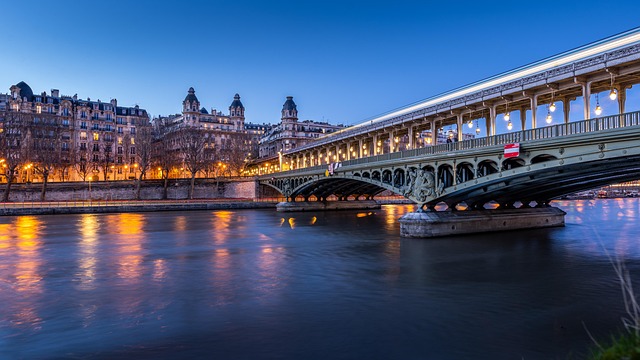Best Cities and Regions to Live in Italy as an Expat

Italy is a country that captivates the hearts of many with its rich history, stunning landscapes, delicious cuisine, and vibrant culture. For expats considering a move to Italy, choosing the right city or region is crucial to ensure a smooth transition and a fulfilling life abroad. Each area of Italy offers something unique, whether it’s bustling cities, serene countryside, coastal charm, or alpine retreats. Below, we’ll explore some of the best cities and regions for expats, highlighting their pros and cons, lifestyle offerings, and what makes them stand out.
1. Florence (Tuscany)
Why Choose Florence?
Florence, the capital of Tuscany, is one of Italy’s most iconic cities and a hub of art, culture, and history. It’s a popular choice for expats who want to immerse themselves in Italian heritage while enjoying a high quality of life.
- Pros:
- Rich cultural scene with world-famous museums like the Uffizi Gallery and Accademia.
- Central location in Tuscany, offering easy access to vineyards, hilltop towns, and beaches.
- Strong expat community, particularly among English speakers.
- High-quality healthcare and education systems.
- Cons:
- Housing costs can be high, especially in the historic center.
- Summers can get hot and crowded with tourists.
- Who It’s For: Art lovers, academics, retirees, and professionals seeking a balance between urban convenience and cultural richness.
2. Milan (Lombardy)
Why Choose Milan?
Milan is Italy’s economic powerhouse and fashion capital, making it an ideal destination for expats looking for career opportunities, modern amenities, and a cosmopolitan lifestyle.
- Pros:
- Thriving job market in industries like fashion, design, finance, and technology.
- Excellent public transportation system and proximity to international airports.
- Vibrant nightlife, trendy neighborhoods, and Michelin-starred restaurants.
- Close to the Italian Alps and Lake Como for weekend getaways.
- Cons:
- Higher cost of living compared to other Italian cities.
- Less emphasis on traditional Italian charm; more fast-paced and business-oriented.
- Who It’s For: Young professionals, entrepreneurs, and families who prioritize career growth and urban living.
3. Bologna (Emilia-Romagna)
Why Choose Bologna?
Bologna is known for its culinary traditions, vibrant student population, and laid-back atmosphere. It’s often considered one of the most livable cities in Italy.
- Pros:
- Affordable cost of living compared to Florence or Milan.
- Renowned food scene with countless trattorias, markets, and enotecas.
- Well-connected by train to major Italian cities like Venice, Florence, and Rome.
- Safe, welcoming environment with a strong sense of community.
- Cons:
- Summers can be humid due to its inland location.
- Fewer tourist attractions compared to more iconic cities.
- Who It’s For: Foodies, students, academics, and young professionals seeking affordability and livability.
4. Turin (Piedmont)
Why Choose Turin?
Turin offers a unique mix of industrial heritage, Baroque elegance, and Alpine proximity. It’s often overlooked by tourists but beloved by those who live there.
- Pros:
- Lower cost of living than northern rivals like Milan.
- Stunning architecture, including landmarks like Mole Antonelliana.
- Proximity to the Alps for skiing, hiking, and outdoor adventures.
- Growing tech and innovation sectors, attracting startups and remote workers.
- Cons:
- Winters can be cold and foggy.
- Smaller expat community compared to larger cities.
- Who It’s For: Outdoor enthusiasts, digital nomads, and individuals seeking a quieter yet dynamic city life.
5. Naples (Campania)
Why Choose Naples?
Naples is raw, chaotic, and utterly captivating—a city that pulses with passion and authenticity. While not for everyone, it rewards those willing to embrace its quirks.
- Pros:
- Incredible food culture, from pizza to seafood.
- Gateway to stunning destinations like Pompeii, Capri, and the Amalfi Coast.
- Warm and welcoming locals who value family and tradition.
- Relatively affordable housing and daily expenses.
- Cons:
- Organized crime remains a concern, though it rarely affects expats directly.
- Traffic congestion and occasional bureaucratic inefficiencies.
- Who It’s For: Adventurous souls, food lovers, and anyone seeking a genuine Italian experience away from polished tourist hubs.
6. Trento (Trentino-Alto Adige)
Why Choose Trento?
Located in northern Italy near the Dolomites, Trento blends Austrian and Italian influences, creating a distinctive cultural identity.
- Pros:
- High standard of living with clean air and abundant green spaces.
- Excellent schools and universities, including Fondazione Bruno Kessler.
- Year-round outdoor activities, from skiing to cycling.
- Safe, family-friendly environment.
- Cons:
- Limited nightlife and entertainment options.
- Language barrier, as German is widely spoken alongside Italian.
- Who It’s For: Families, nature lovers, and retirees seeking tranquility and scenic beauty.
7. Perugia (Umbria)
Why Choose Perugia?
Perugia is the capital of Umbria, known as the “green heart of Italy.” It’s a charming mid-sized city with a slower pace of life.
- Pros:
- Affordable cost of living and reasonable real estate prices.
- Rich artistic heritage and annual festivals like Eurochocolate.
- Surrounded by picturesque countryside dotted with olive groves and vineyards.
- Home to the University for Foreigners, attracting international students.
- Cons:
- Public transportation links are less extensive than in bigger cities.
- Fewer job opportunities outside academia and tourism.
- Who It’s For: Students, teachers, and retirees looking for a peaceful, culturally rich setting.
8. Sicily (Palermo or Catania)
Why Choose Sicily?
Sicily offers a unique blend of Mediterranean charm, ancient history, and vibrant street life. Palermo and Catania are two standout cities worth considering.
- Palermo:
- Pros: Lively markets, diverse architecture, and a thriving arts scene.
- Cons: Urban sprawl and occasional administrative challenges.
- Catania:
- Pros: Proximity to Mount Etna, beautiful coastline, and youthful vibe.
- Cons: Hot summers and occasional volcanic activity.
- Who It’s For: Expats seeking sunshine, affordability, and a deep dive into southern Italian culture.
9. Liguria (Genoa or Cinque Terre Area)
Why Choose Liguria?
This coastal region is perfect for expats who love the sea, mild climates, and quaint villages.
- Genoa:
- Pros: Historic port city with affordable housing and a revitalized waterfront.
- Cons: Industrial areas and occasional grime in certain neighborhoods.
- Cinque Terre Area:
- Pros: Stunning landscapes, hiking trails, and relaxed lifestyle.
- Cons: Limited services and higher property prices due to tourism.
- Who It’s For: Retirees, artists, and remote workers craving coastal living.
10. Sardinia (Cagliari or Alghero)
Why Choose Sardinia?
Sardinia is a paradise for beach lovers and outdoor enthusiasts, with crystal-clear waters and rugged terrain.
- Cagliari:
- Pros: Capital city with a mix of history, modernity, and great beaches.
- Cons: Summer heat and occasional isolation from mainland conveniences.
- Alghero:
- Pros: Catalan influence, beautiful coastline, and friendly locals.
- Cons: Smaller size limits professional opportunities.
- Who It’s For: Nature lovers, retirees, and families prioritizing relaxation and island vibes.



